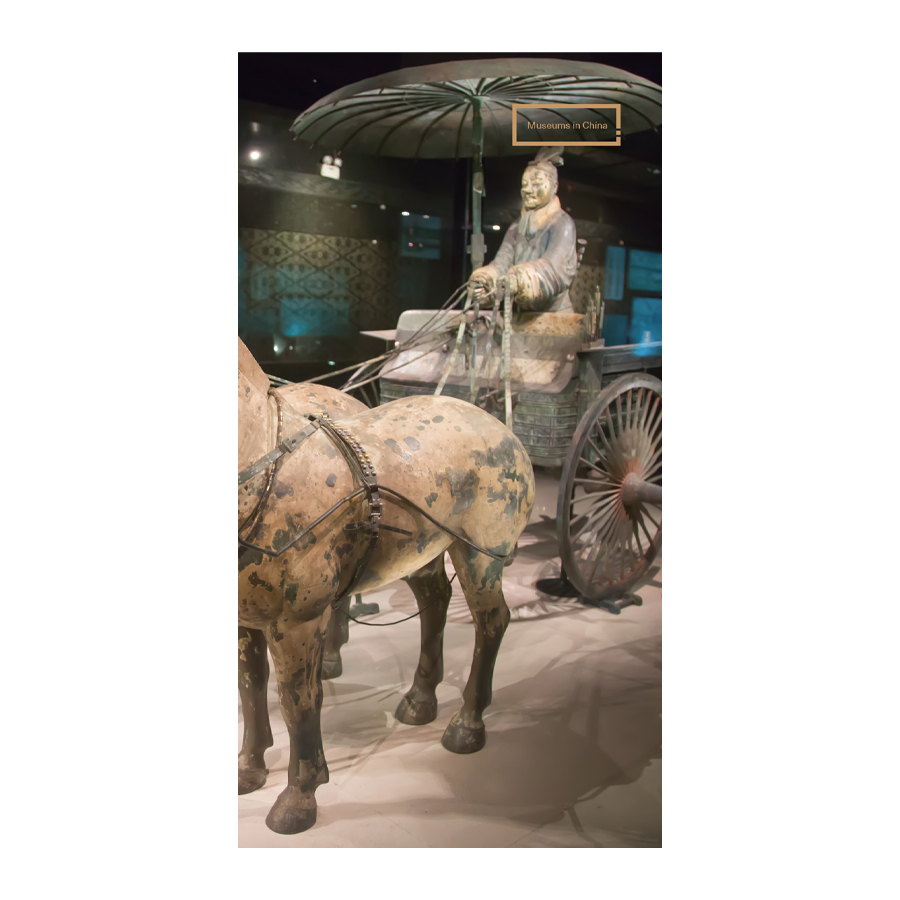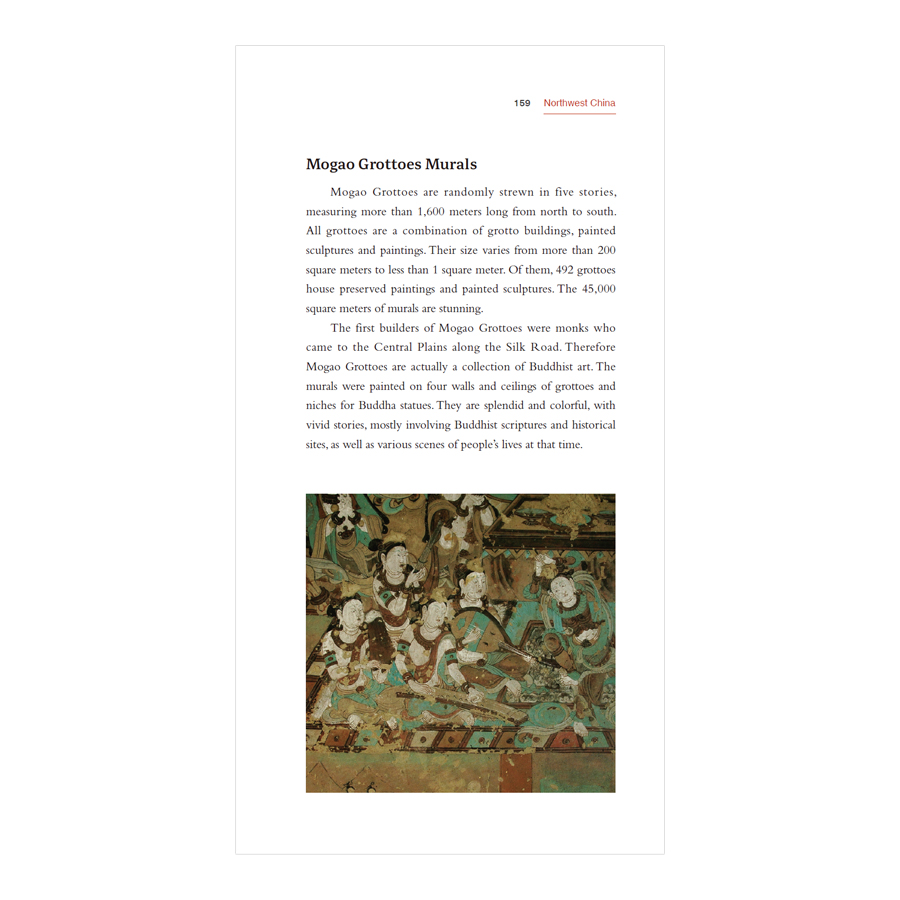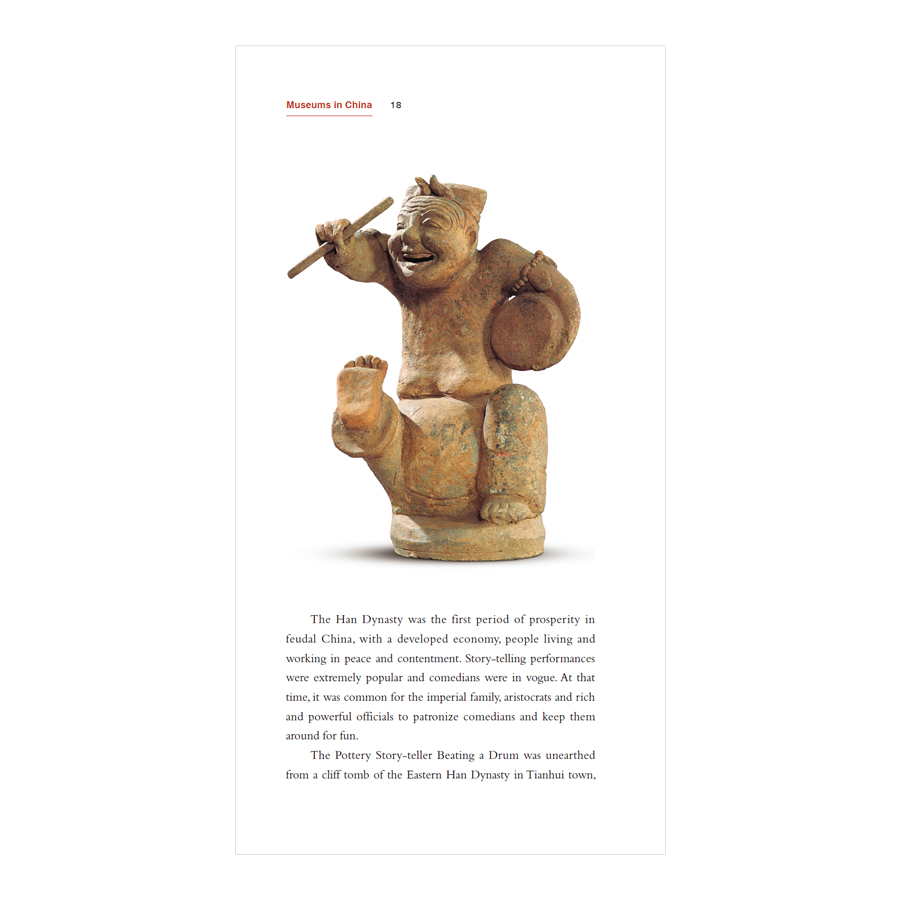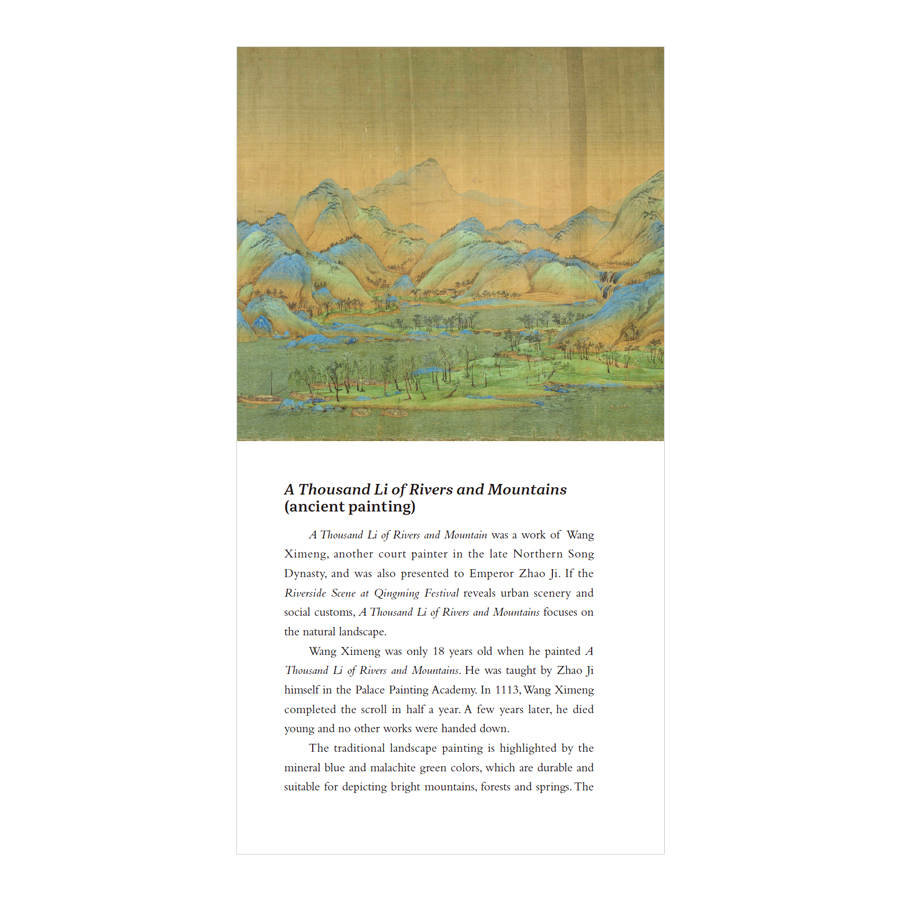
出版社: 五洲传播
原售价: 78.00
折扣价: 42.90
折扣购买: 地图上的中国:博物馆品鉴(英)
ISBN: 9787508545875

杨不易,本名杨方毅,四川人,居成都。四川省作家协会会员、成都市作协会员。出版有《伪单身时期》《火枪与玫瑰》《窄巷子宽生活》等,与人合著《九天开出一成都》《匠心成都三千年》《文物中的成都生活》。
The human face is decorated with fish-shaped patterns at the corners of the mouth, with a fish on each ear... The human face and fish patterns painted in black are symmetrical on the inner wall of the pottery basin. What do they mean? What do these two big fish with triangular heads and bodies represent? Unearthed at the Banpo Site of Yangshao Culture in Xi’an city, Shaanxi province in 1955, this mysterious painted pottery basin collected by NMC is a mystery that needs exploration. Yangshao Culture is the most important archaeological culture of the Neolithic Age in China, and is spread in the middle and lower reaches of the Yellow River and marginal areas. The Painted Pottery Basin with Fish and Human Face Design belongs to this cultural period. In archaeological excavations, when the cover of a child’s urn coffin was lifted, it looked like a red basin with black patterns painted on the wall. These patterns are exquisite and mysterious. 要读懂一座城市,最直接、最有效的方式,就是从参观她的博物馆开始。那些安静陈列着的化石标本、历史文物和艺术品,就是这座城市最生动的呈现、最温情的讲述。而要了解一个国家,读懂她的历史文明,又何尝不是如此呢?



